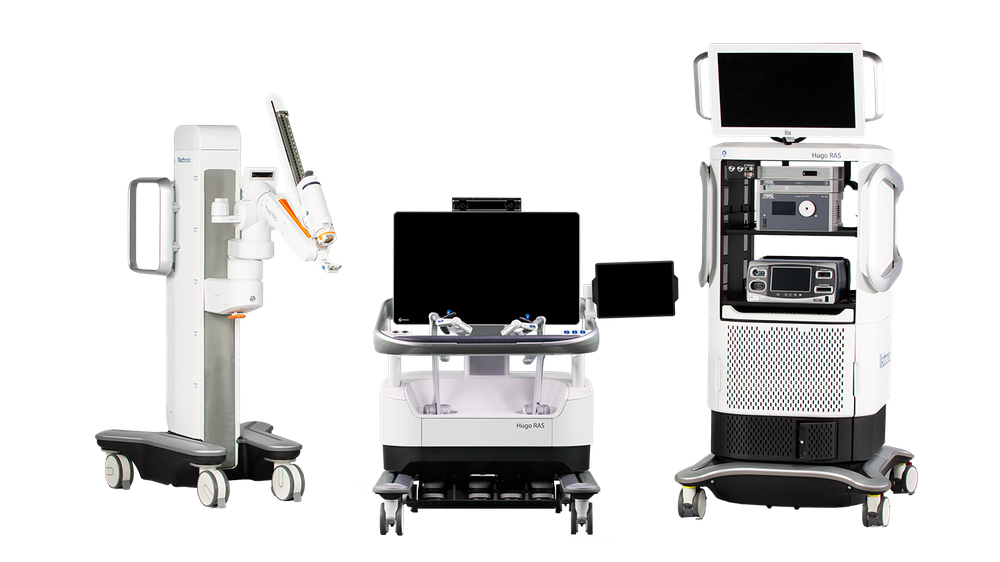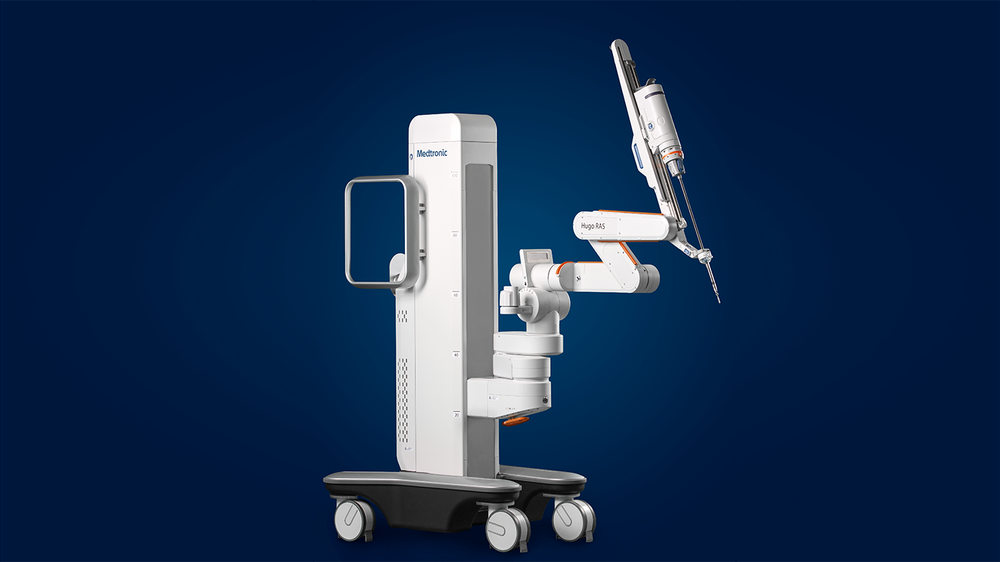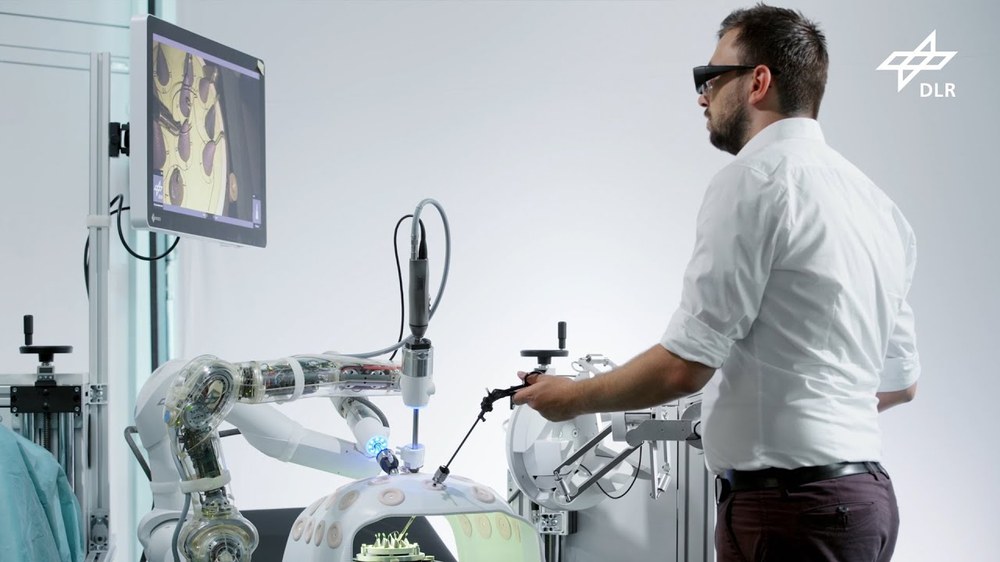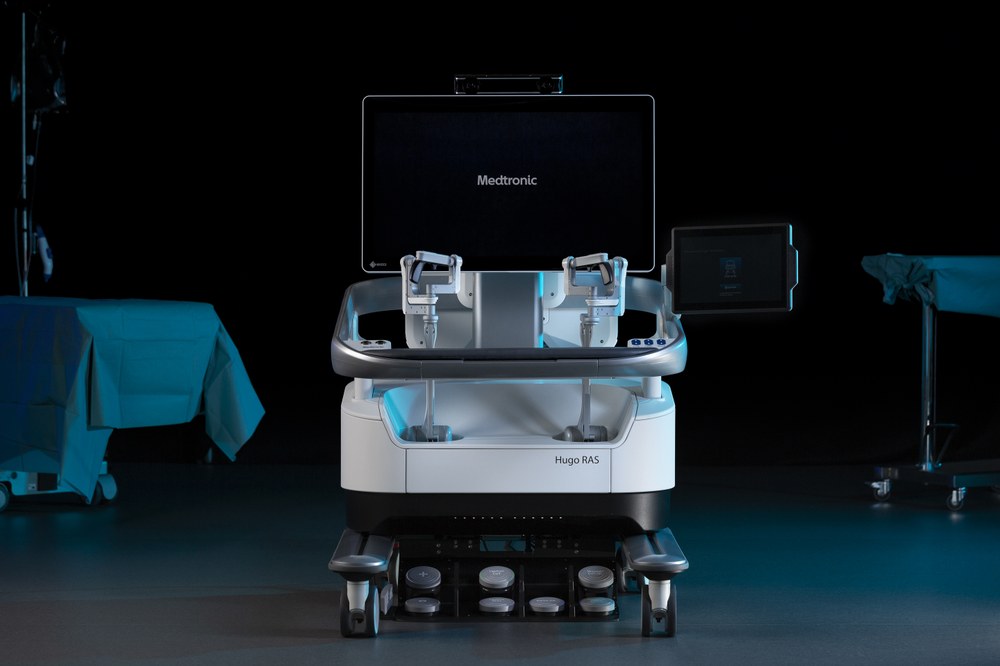Hugo: Space technology for the operating theatre
It was a long journey before the new Hugo™ RAS (robotic-assisted surgery) system from Medtronic arrived in operating theatres, but it was worth it:
"The Hugo RAS system epitomises the practical application of research results that DLR has developed with MIRO. In cooperation with partners from industry, the design of innovations through to technology transfer is successful here."
Prof. Karsten Lemmer, DLR Executive Board Member for Innovation, Transfer and Scientific Infrastructures
The journey begins in the 1990s in Oberpfaffenhofen, Bavaria: the DLR Institute of Robotics and Mechatronics is researching the technology of lightweight robotic arms – initially for space travel. The engineers are developing sensitive robotic arms that can be controlled from Earth or from the International Space Station (ISS), for example for repair work in the outer area of the space station. The idea of further developing these sensitive robotic arms for medical applications was already maturing in the minds of DLR researchers at the time.
"Our medical robotics team works with sophisticated robotic high technology that was originally developed and verified for use by astronauts in space," confirms Prof. Alin Albu-Schäffer, Head of the DLR Institute of Robotics and Mechatronics.
The result of this development is MIRO, a lightweight robotic arm optimised for medical applications.
DLR technology for innovation in robot-assisted surgery
Operations with robotic assistance systems are no longer a rarity. The surgeon sits at the console and the robotic arms carry out his commands precisely, safely and gently for the patient. The advantages for patients and surgeons outweigh the disadvantages and are obvious: physical and cognitive relief for surgeons, innovative treatment with less trauma for patients.
The new Hugo RAS system is based on the technological principles of the MiroSurge telesurgery system developed by the DLR. Depending on requirements, the MiroSurge system consists of two or more MIRO robot arms. MIRO is kinematically redundant and fully torque-controlled. It is modelled on the human arm in terms of structure, size and mobility, so that it can be operated intuitively, sensitively and safely. During an operation, the surgeon controls one or more MIRO robots, the so-called MiroSurge system, from an open surgical console. The robotic arms can be equipped with various specialised instruments and can therefore be used flexibly and modularly.
These features of the DLR-MIRO were further developed by Medtronic and are reflected in the new Hugo-RAS system: the mechatronic design with the torque-controlled lightweight robot arms and numerous sensors ensures that the movements are carried out with high precision. The surgeons control the robots' instruments with the help of input devices. They perform the operation from an open console, which allows visual contact with the patient and the surgical team at all times, while viewing the endoscope images in 3D on a screen. Thanks to its modularity, the Hugo RAS system can be used more flexibly and therefore potentially more cost-effectively.
DLR technology transfer - successful together
DLR research results provide answers to urgent questions of social development in numerous areas, including medicine and health. The aim is to create innovations that reach people as quickly as possible. Innovations are the drivers of markets and offer competitive advantages. However, there is a long way to go before an idea and the initial research results become marketable products and services. DLR is a co-operation partner for industry and, by involving industrial partners as early as possible, contributes to the development of applicable technologies and thus to strengthening Germany as a business location. The strong and targeted investment in innovation projects and long-term strategic partnerships with industry across all sectors of the economy is paying off: The development of Medtronic's Hugo RAS system to market maturity is one of these success stories. The CE certification of the system in 2021 was a major milestone, but the journey continues until Hugo conquers operating theatres worldwide.

Medtronic

Medtronic

Space technology in the operating room - medical robotics at DLR (MIRO Innovation Lab)
Your consent to the storage of data ('cookies') is required for the playback of this video on Youtube.com. You can view and change your current data storage settings at any time under privacy.


